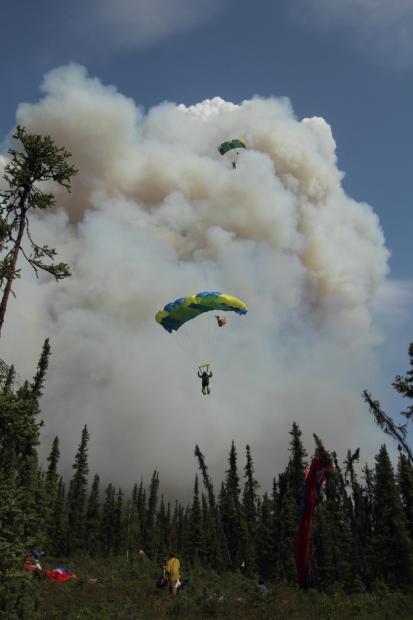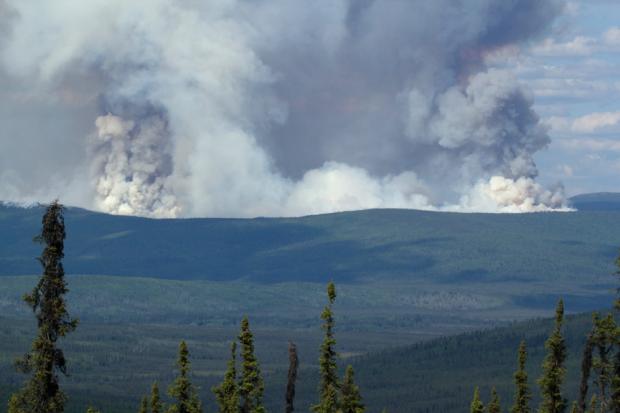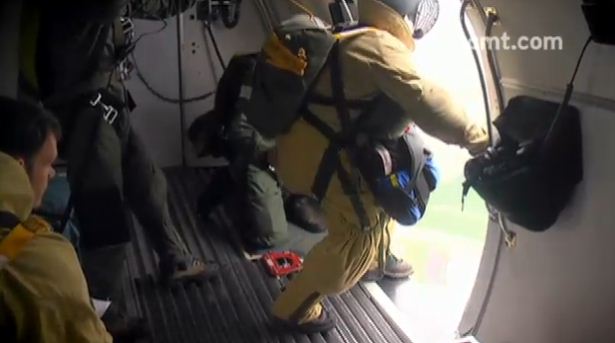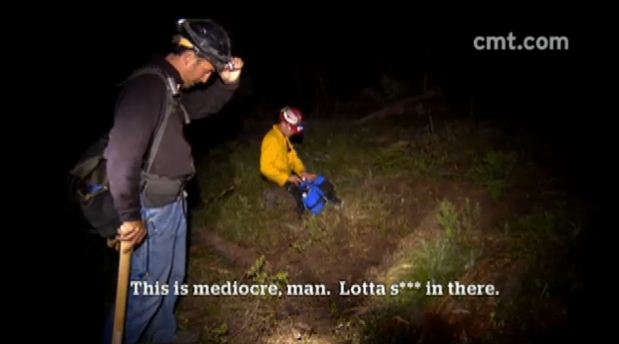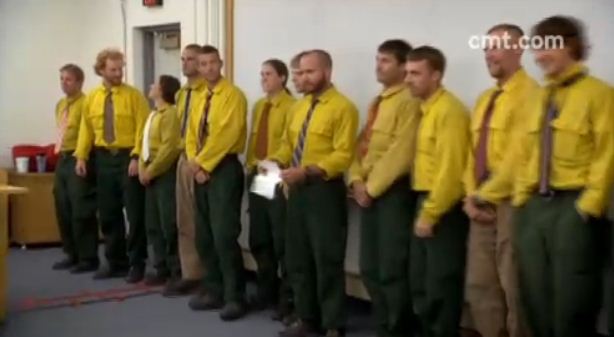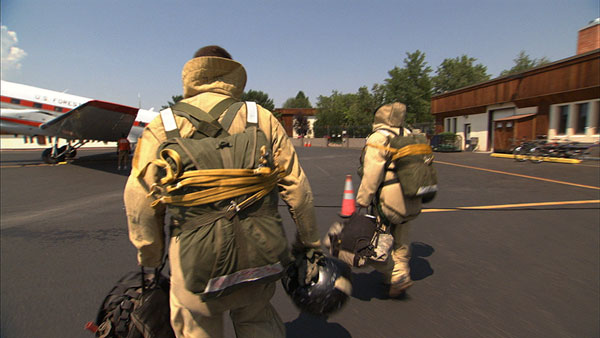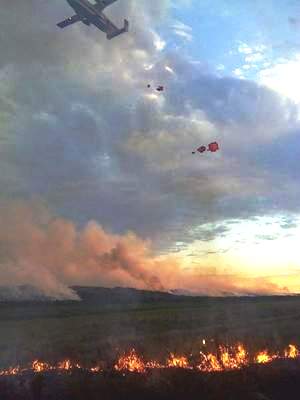 This photo on the GreatFallsTribune web site got my attention. The caption reads as follows:
This photo on the GreatFallsTribune web site got my attention. The caption reads as follows:
Smokejumpers head for an open landing area during the early stages of last season’s Rat Patch Fire deep in the Missouri River Breaks. BLM PHOTO
I am not certain there are any smokejumpers in the photo — it may be para-cargo. Regardless, unless there is a green meadow or no vegetation in that drop zone, it seems like an odd choice for a place to insert people OR cargo — between two fingers of fire. But, it’s difficult to tell much from the photo.
The picture was attached to an article about the outlook for the wildfire season in Montana. Here is an excerpt:
Above-average precipitation and snowpack that contributed to severe flooding this spring in Montana likely will ease the severity of the wildfire season.
However, the season is beginning to heat up after getting a late start because of wet conditions, according to the Northern Rockies Coordination Center in Missoula.
The center, which coordinates fire resources and predicts severity of the fire season for the region, is forecasting a below-average to average fire season in the Northern Rockies because of the cool, wet spring, coupled with the heavy snowpack.
Moist conditions slowed the usual July 4 beginning of the fire season by two weeks, said Bryan Henry, a predictive service meteorologist for the Northern Rockies Coordination Center.
Wildfires burn about 160,000 acres in a normal year in the Northern Rockies.
“We’re probably looking at that or maybe less,” Henry said.



